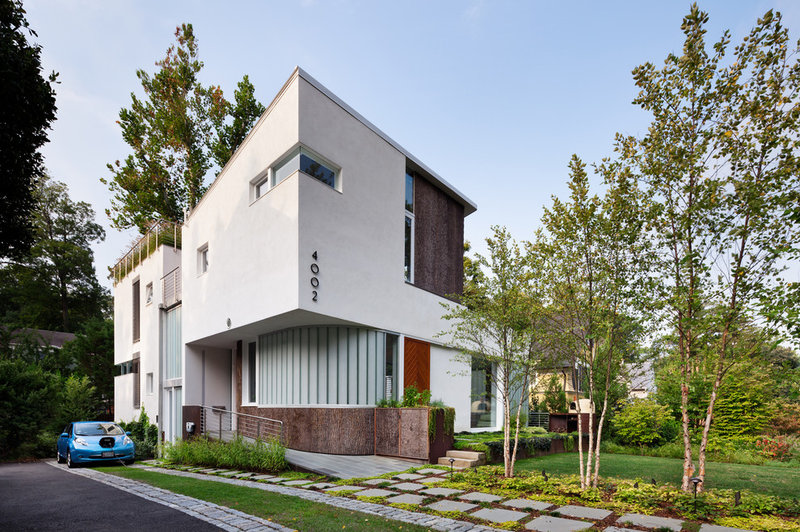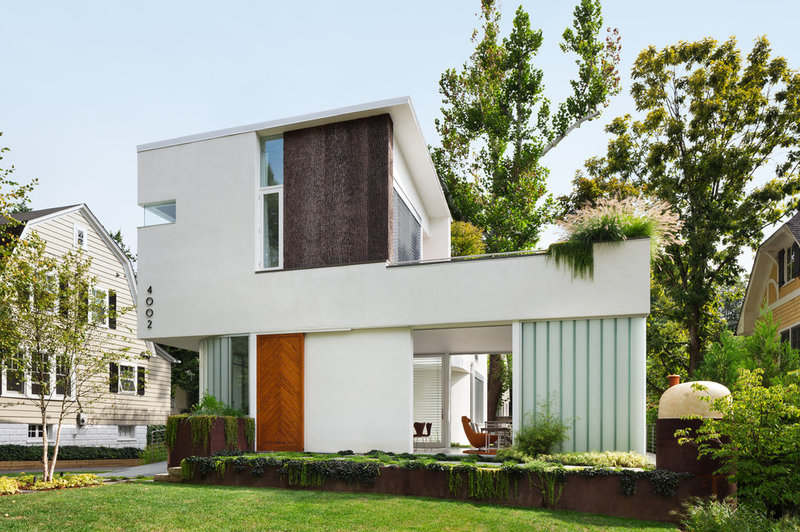But that wasn’t all the homeowners wanted their house to do. They decided to build a new home that would double as a demonstration house, allowing the designers to experiment with innovative materials, spatial arrangements and energy-efficient features. Starting with the demolition of the property’s existing house, the homeowners and architects invited neighbors to observe and engage with the project in progress.
Houzz at a Glance
Location: Chevy Chase, Maryland
Who lives here: A middle-aged couple planning to live here the rest of their lives
Size: 2,400 square feet (223 square meters), plus a 1,000-square-foot (93-square-meter) basement
Year completed: 2013
Major foundation and structural problems made it necessary to tear down the existing house on the lot. During the home’s demolition, the Meditch Murphey team worked withCommunity Forklift, a D.C. nonprofit that sells surplus and salvaged building materials. Students working with the organization used the demolition as a summer school project, learning about demolition and deconstruction techniques. Afterward, usable materials were donated to the organization.
The team continued to include the community throughout the design and build phases. During construction they installed an educational billboard in front of the house and posted information about the house and specific features they planned to include. As soon as it was safe to do so, the architects gave tours of the house, answering questions and hearing neighbors’ thoughts about the home. Even now the homeowners lead tours for anyone interested in seeing what’s going on.
The exterior has an interesting mix of materials. White stucco walls reflect hot sun and are heavily insulated to keep the house warm in winter and cool in summer. Windows cover most of the remaining walls. Tulip poplar bark on the second story is perhaps the most distinct exterior feature. The architects saw the material used in a project at the Solar Decathlon; the material is a waste product from tulip poplar trees being milled for lumber. Companies are starting to use the kiln-dried bark for shingles, but Meditch Murphy left it as one big sheet. “People are blown away by the tree bark,” Meditch says. The sliding front door is Accoya wood, a resilient, low-maintenance hardwood that’s a sustainable and renewable alternative to tropical hardwoods.


